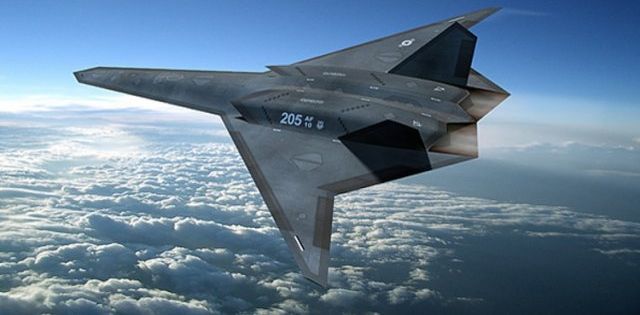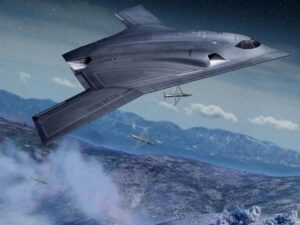Boeing’s Bomber Protest Is Fundamentally Flawed
Posted on
Who’s right about the Long Range Strike Bomber (LRSB) program: defense consultant Loren Thompson or the Air Force and senior Defense Department officials?
The Air Force awarded the LRSB contract to Northrop Grumman. The competing Boeing-Lockheed Martin team was considered a slim favorite in this closely-held, closed competition, owing primarily to their scale and heft. To no one’s surprise, this losing team protested the award, perhaps given the scarcity of similar large defense programs in the future.
The 100-day protest process, governed by the Government Accountability Office (GAO), will take place mostly behind closed doors. But we’ve been provided a peek into Boeing’s protest strategy courtesy of Loren Thompson in Forbes who, in full disclosure, admits that both Boeing and Lockheed contribute to his think tank and that he does consulting work for Lockheed Martin. According to Mr. Thompson, the Boeing/Lockheed team was knocked out of the competition in the early rounds, owing to a Northrop willingness to bid a price for the program seemingly divorced from inherent risk, and a failure of the government to recognize Boeing’s promised manufacturing innovations
Therefore, he concludes, the acquisition process was “fundamentally flawed” and must be revisited. A closer look at the competition, based on statements by the Air Force and the past performance of the competitors, suggests that it is the grounds for the Boeing protest that are fundamentally flawed.
In making its choice for a prime contractor to develop and build the LRSB, the Air Force and the head of Pentagon acquisition, Frank Kendall, repeatedly stated that industrial base considerations would not be a critical factor. What did matter to the Air Force was the past performance of the competing teams and their core competencies. Northrop designed, developed, and maintains the only stealth bomber in the world, the B-2. The last bomber developed independently by Boeing was the B-52, a late 1940s design produced from 1952 to 1962.
Boeing acquired other combat aircraft programs, such as the F-15 and the B-1, through merging with other companies. Boeing has never designed an operational stealth aircraft of any kind – a critical deficiency in the competition for a new stealthy bomber. Within its defense portfolio, Boeing specializes in modifying non-stealthy commercial aircraft for military use, most recently converting a commercial 767 airframe into a military refueling aircraft. But this sorely needed and, presumably, simple modification has turned into a nightmare. Technical problems have plagued the KC-46, including faulty wiring and fuel system anomalies, both of which required redesign. Consequently, the development program is now a year behind schedule, and has increased significantly in cost. The Air Force originally estimated a ceiling of $4.9B, but the current estimate, according to the GAO, is $6.3B.
Core competencies matter in these competitions, and Boeing’s is designing, developing and sometimes modifying commercial passenger aircraft. But recently that also has not been a pretty picture. In 2004, the company estimated that research and development of its new airliner, the 787, would require four years and cost $5.8 billion. But technical issues plagued this program, including problems with wiring and software as well as fuel leaks and battery fires. Boeing also had serious problems managing its supply chain, and was forced to bring outsourced work back inside the company. Development took twice as long as expected, with the first delivery coming in 2011 rather than 2008, and at a cost more than twice Boeing’s initial estimate.
What are the implications of this track record for the LRS-B competition? The Boeing Company has consistently underestimated the costs and technical difficulties of military and commercial aircraft development, even on relatively simple programs. Although Mr. Thompson contends that the Air Force doubled both bids, all we really know is that based on historical experience and rigorous analysis, the USAF estimated the LRSB development would cost $21.4B. Both contractors were incentivized to come in below that amount. However, we have no idea what the actual bids of each team were—or how the USAF evaluated those estimates. What we do suspect is that the Air Force recognized the risk involved in Boeing building a stealthy bomber – something the company has never done before. Boeing might argue that its bid accounted for this risk, but its poor performance on the KC-46 tanker and 787 programs show that Boeing simply is not good at estimating development costs or technical risks.
All-aspect stealth–the low observability required for a penetrating bomber — is another important differentiating factor. Boeing probably hoped that its partnership with Lockheed Martin would mitigate its own shortfalls in this critical area. After all, Lockheed designed and is building the stealthy F-35 and helped pave the way with stealth with the SR-71 and the F-117 fighter. However, Air Force acquisition professionals surely questioned how this teaming effort would work in practice. Would the subcontractor, Lockheed Martin, dictate design changes to the prime contractor, Boeing? Would Lockheed be willing to share the design data with Boeing? Moreover, such a relationship already exhibited a checkered record. A 2005 RAND report noted that the Boeing-Lockheed partnership on the F-22 program led to an artificially distributed workshare contributing to increased costs and schedule delays. How Boeing and Lockheed would divide up LRSB workshare and proprietary stealth technology is unknown, but their past performance again suggests that program costs would well exceed their promises.
This brief review of the past performance and core competencies of the Boeing-Lockheed team suggests that the Air Force selection process for LRSB—employing multiple reviews and several independent cost estimates—rather than being “fundamentally flawed” was sound and thorough. Boeing complaints that the Air Force unfairly penalized their bid on cost contradict reality. The KC-46 and 787 development programs priced out at double what Boeing originally estimated, experiencing costly delays owing to technical challenges and mismanagement. And Boeing proposals to wave away these unfavorable historical cost data with reference to a mysterious and untested “Black Diamond” manufacturing concept are unlikely to be convincing. In such competitions, the Air Force must rely on demonstrated competencies and past performance, not on unproven theories. As Secretary James noted, the independent cost estimators evaluating the LRSB bids “do have this pesky thing called data and facts on their side more often than not.”
Anand Datla is a former Defense Department civilian who worked on strategic planning, policy and operations. He was a professional staff member of the House Armed Services Committee. He is currently a consultant based in the Washington area. He does not work for any of the companies involved in the program.
Subscribe to our newsletter
Promotions, new products and sales. Directly to your inbox.


